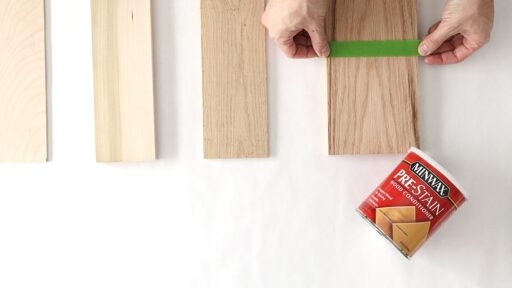A fresh, breezy home is not just more comfortable, it’s healthier too. And if you’re like most people, you’ve probably noticed how important good airflow is, especially during hot summer months or chilly winters.
But what if your airflow is impacted and you’re not exactly in the market for a major home renovation?
Well, there are plenty of budget-friendly ways to improve airflow without breaking the bank.
A good airflow helps regulate temperature, reduce moisture, and keep your home smelling fresh. It can even prevent things like mold, mildew, and allergens from making themselves at home.
If your space feels stuffy or you’re not getting the circulation you need, this blog will walk you through 10 simple, affordable fixes.
So, let’s dive in.
The Best Budget Ways To Fix Your Home’s Airflow
1. Open Your Windows (The Simplest Fix)
Sometimes, the best solution is the simplest one.
If you’ve got a nice breeze outside, why not take advantage of it?
Opening windows, especially in the early morning or late evening when temperatures are cooler, can help create natural airflow through your home.
Try opening windows on opposite sides of the house to encourage a cross-breeze. This is an easy way to get fresh air moving through rooms without spending a penny.
Plus, it can help clear out stale air and improve overall air quality.
2. Use Box Fans
A box fan is one of the most affordable tools to improve airflow. For about $30 to $50, you can pick one up and position it to either pull fresh air into your home or push warm air out.
If it’s a particularly hot day, placing a fan in the window to push air outside can help reduce the indoor temperature and create a natural cooling effect.
You can even get fancy with it. Use two fans, one on either side of the house, to create a wind tunnel effect, pushing air through the rooms for maximum circulation.
3. Install or Update Your Air Filters
Your HVAC system is responsible for circulating air throughout your home, and its filters play a huge role in how well that happens.
Dirty or clogged filters can restrict airflow, making your system work harder. This can lead to higher energy bills and reduced efficiency.
Worse, it can deteriorate your indoor air quality and cause health problems to everyone living in your home.
You should replace your air filters at least every 3 months. And if you have pets or allergies, it’s a good idea to hire an experienced indoor air quality testing expert and get your air tested too.
Air filters are cheap, usually under $20, and regularly replacing them ensures that your HVAC system is working at peak performance.
4. Adjust Your Ceiling Fans
Ceiling fans are often underestimated when it comes to improving airflow. However, they can make a huge difference in how air moves around your home.
Here’s a pro tip: Many ceiling fans have a reversible motor. In the summer, set the fan to spin counterclockwise to push cool air down. In winter, reverse the direction to push warm air back down from the ceiling, keeping your space warm without cranking the heat up.
You can often find ceiling fans for as low as $50, making this an affordable way to regulate airflow year-round.
5. Seal Gaps and Cracks
Drafts are a major culprit when it comes to poor airflow. Gaps in windows, doors, and walls can make it harder to keep air flowing evenly through your home, and can lead to uneven temperatures or higher energy bills.
Before you go spending money on major repairs, check for any gaps or cracks in your windows, doors, and walls.
Simple weatherstripping or caulking can cost as little as $10, and it’s a great way to keep air moving in the right direction.
This will also help your HVAC system run more efficiently, saving you money in the long run.
6. Use Natural Ventilation for Cooking
We all know the kitchen can get pretty hot, especially if you’re running the oven or stove.
But did you know that using natural ventilation can help improve airflow while you cook?
Simply open a window or turn on a kitchen exhaust fan to help hot, humid air escape.
This can also help reduce the buildup of moisture, which is key to preventing mold and mildew, especially in New Jersey’s humid summer months.
Bonus: This technique can also get rid of cooking odors, keeping your home smelling fresh!
7. Keep Your Vents Clean and Clear
Just like dryer vents, your HVAC vents can accumulate dust and debris over time. If air can’t flow freely through the system, your home’s airflow can suffer.
The good news?
Cleaning your vents is a simple DIY task that won’t cost you more than a few bucks for a vacuum attachment or vent cleaning brush.
Make sure to dust and vacuum your vents regularly. It’s a small effort that can make a big difference in keeping your home’s air moving properly.
8. Open Interior Doors
You might not realize it, but closing interior doors can create barriers for airflow, especially in smaller spaces. By leaving doors open (even just a crack), you allow air to flow freely from room to room.
If you’re using a box fan or ceiling fan, keeping doors open can help move air more efficiently.
Plus, it prevents rooms from becoming stuffy and improves circulation throughout your home.
9. Consider a DIY Air Exchange System
If you’re feeling a bit handy, you can install a DIY air exchange system to improve airflow.
Essentially, this involves setting up an intake and exhaust system that brings in fresh air while pushing stale air out.
You can buy inexpensive vent systems for around $50-$100, or make one yourself by creating an intake vent on one side of your home and an exhaust vent on the opposite side.
This doesn’t replace a proper HVAC system but can provide some natural ventilation and improve air circulation in smaller areas.
10. Utilize Houseplants for Better Air Quality
While plants might not directly improve airflow, they can help improve the quality of the air circulating in your home. Certain houseplants, like spider plants and peace lilies, are known for their ability to filter the air and remove toxins.
A few potted plants around your house can add to the aesthetic of your home and improve the air you breathe.
Conclusion
Improving airflow in your home doesn’t need to involve major renovations or expensive equipment.
From simple tricks like opening your windows to more hands-on solutions like sealing gaps or replacing filters, these budget-friendly fixes can dramatically improve how fresh and comfortable your space feels.
Whether you’re looking to beat the summer heat, reduce your energy bills, or just enjoy better indoor air quality, these small adjustments can make a world of difference. You don’t need to spend a fortune to create a home that feels as good as it looks.
FAQs About Improving Home Airflow
How often should I clean my vents?
You should clean your vents at least once a year to maintain healthy airflow. If you notice dust or debris accumulating more quickly, try cleaning them every six months.
Do ceiling fans actually help with airflow?
Yes! Ceiling fans help circulate air and can make your space feel cooler in summer and warmer in winter. Adjust the direction based on the season for maximum benefit.
Can houseplants really improve air quality?
Yes, certain plants like the spider plant, aloe vera, and peace lily can help filter out toxins in your home, making the air you breathe cleaner.
How can I tell if my home has poor airflow?
If you notice stuffy rooms, high humidity, or inconsistent temperatures throughout your house, it’s a sign that your airflow could use some improvement.








